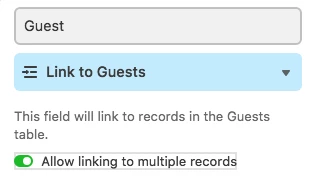Hi,
I am new to Airtable and I am trying to migrate my studio’s crate inventory (crates contain artworks that we ship to museums and then back to us). We used an excel sheet unto which we had a ‘‘history’’ box. That is where we’d manually list all the previous locations with the years of where a specific crate had been shipped before returning to us. Is there a clever/simple way to keep track of such info in Airtable? Like a tab that keeps track of each crate’s previous locations when we update its current location?
I hope this makes sense, thanks y’all!


